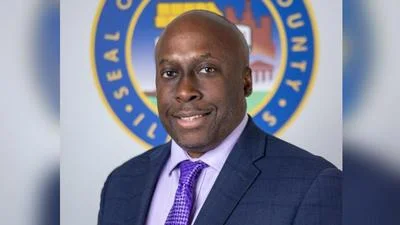Gottlieb Memorial Hospital issued the following announcement on Jan. 14.
Since 2000, a staggering 200,000 people have died from prescription opioid overdose in the U.S. In 2016 alone, the number of people abusing prescription opioids exceeded 11 million and more than 17,000 people died of prescription opioid overdose.1 However, there are millions of people experiencing chronic pain and taking opioids to be more functional in their daily lives.
The primary challenge facing any healthcare provider is to identify how to achieve the right balance between the appropriate use of opioids for pain relief and the prevention of opioid abuse and overdose.
Medication Options for Pain Relief
Pain management does NOT necessarily mean opioid management. A balanced pain relief plan involves a wide array of both medication and non-medication regimens. There are many pain relief drugs that, if used appropriately, would be more effective than using only opioids. Opioids, aspirin and other anti-inflammatory drugs help with pain arising from bones, muscles, joints and other tissues. Nerve pain medications are useful for certain pain conditions like sciatica, diabetic neuropathy, post-herpetic neuralgia and fibromyalgia.
Conditions such as post-surgical pain, cancer pain and trauma-related pain need different pain relief medications in combination. Addressing co-existing conditions such as anxiety, depression, insomnia, poor positioning, muscle spasms and cramps will greatly reduce the need for opioids.
Use of sedatives, muscle relaxants and chronic pain relief medications will help as well. Topical pain relief medications, including lidocaine patches, menthol products, capsaicin, arnica and cannabidiol-based products are also useful.
Alternative Treatment and Therapies
Therapies for pain management include heat, ice, nerve stimulation, ultrasound, physical therapy, land/aquatic exercises, stretches, yoga, tai-chi and others. Complementary treatments like acupuncture, acupressure, cupping, reiki and homeopathic treatments are worth exploring.
Loyola has experienced psychiatrists and pain psychologists to help with psychological/behavioral therapies that include mindfulness, cognitive-behavioral therapy, relaxation techniques, breathing exercises, meditation, biofeedback and hypnosis.A diet rich in antioxidants (ex., berries, turmeric) may help with pain. However, there’s a lack of strong supportive evidence for many alternative treatments.
Pain Relief Services at Loyola
Loyola has several dedicated pain service teams. The Anesthesia/Acute Pain Service (APS) team provides treatments for post-surgical pain such as nerve and epidural blocks/catheters. IV pain relief medication and extended release local anesthetic injections are also available for some patients. For patients who require high doses of opioids, APS offers IV Ketamine (a drug which helps with pain and makes patients sensitive to the opioids) infusion service.
Loyola also offers patient-controlled pain relief medications for inpatient care. For patients on chronic opioids, the managing team determines and doses the correct amount of IV infusion. Patients may give themselves an extra dose at periodic intervals for severe pain. As the pain subsides, they are transitioned back to opioids that can be taken orally.
The Chronic Pain Service (CPS) offers interventional approaches to help with pain, including steroid injections and nerve blocks. We also offer implant procedures such as spinal cord and nerve stimulators for chronic pain.
Tips for successful long-term opioid management:
- Careful screening, using tools like the ‘Opioid Risk Tool’ (ORT).
- Pain agreements: constitute a framework for patients and providers to adhere to.
- Random urine testing.
- Prescription Monitoring Programs: Provide data on providers, doses, dates and pharmacies. This data significantly helps in detecting opioid abuse.
- Regular follow-up visits and documentation of pain relief medication history for better compliance.
- Limiting the number of doses per prescription.
Availability of opioid overdose antidote Naloxone, support from immediate friends/family, CPR-trained community members and paramedics help to save lives. Providing an ongoing education program on pain management to patients, providers, trainees, nurses and supporting staff is important. Loyola's Pain Management Committee oversees the institutional policies and protocols, pain management orders and periodic reviews of best practices.
Opportunities and future directions:
Robust evidence-based research on safer opioids and non-opioid pain relief is much needed. Quality assurance and regulation of pain relief products/devices are important. We will also need real-time access to relevant opioid data and analysis with advanced technologies, like blockchain technology, to better monitor and prevent the abuse of opioids moving forward. Patients, providers, hospitals, pharmacies, policy makers, payers and regulatory agencies have to come together in a seamless integrated manner and fight the opioid epidemic.
Original source can be found here.

Source: Gottlieb Memorial Hospital






 Alerts Sign-up
Alerts Sign-up